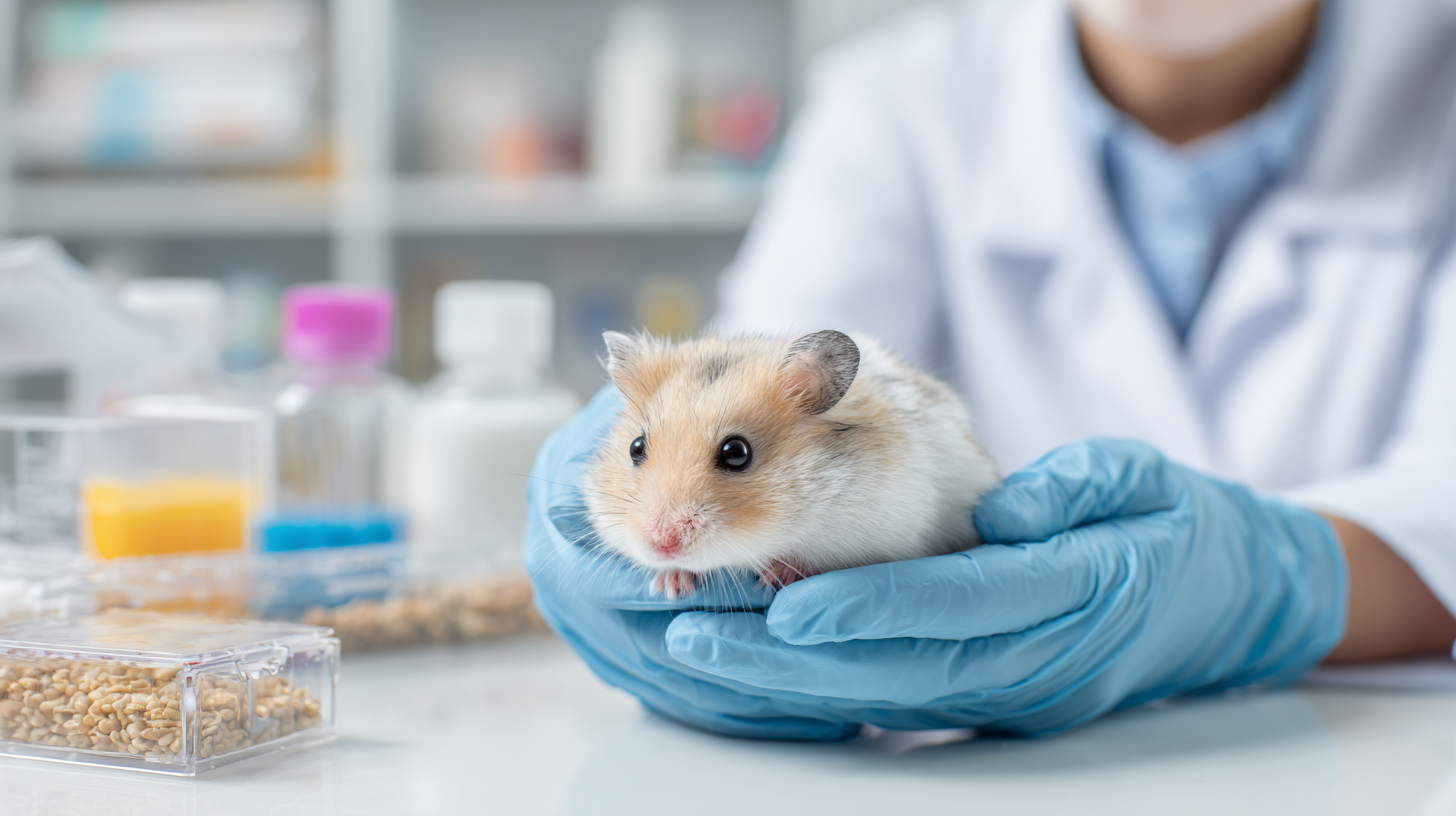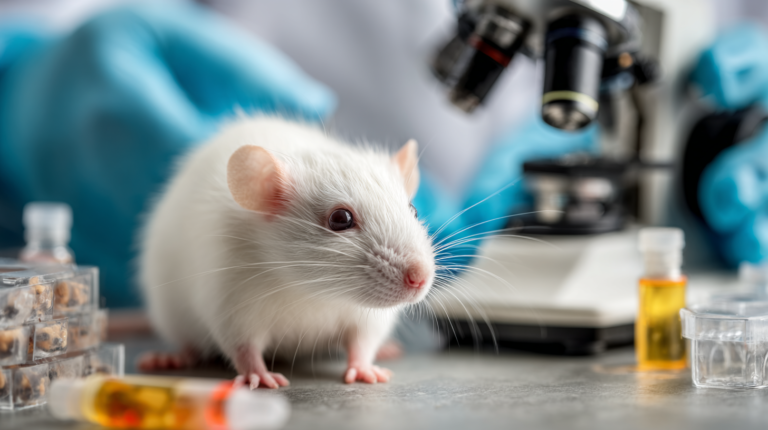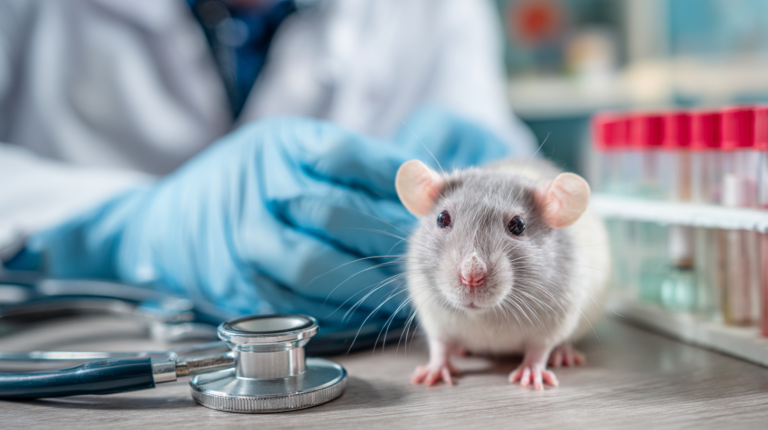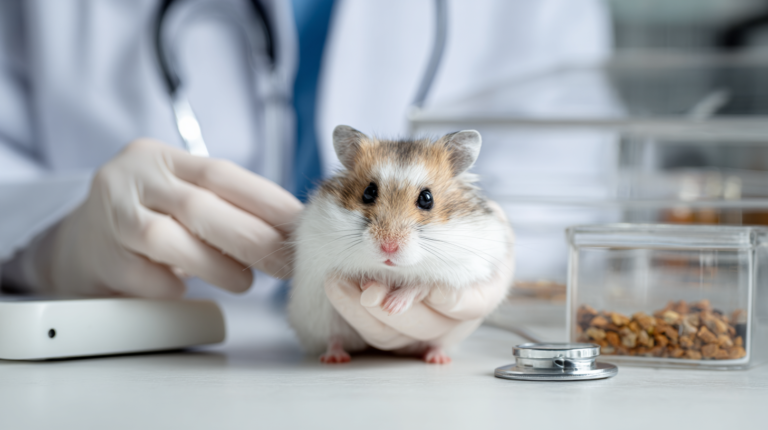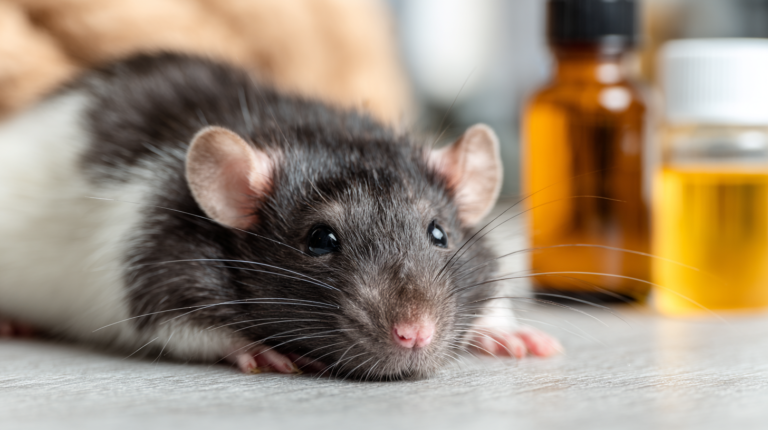Discover enteritis in rodents: 4 serious triggers causing digestive distress plus proven veterinary fixes to restore your pet’s health fast.
Table of Contents
As a small pet owner, few things are more alarming than watching your beloved hamster, guinea pig, or rat suddenly lose their appetite and develop severe digestive issues. Enteritis in rodents represents one of the most serious health challenges facing small pet owners today, affecting thousands of companion animals annually and requiring immediate veterinary intervention to prevent life-threatening complications.
This comprehensive guide, developed with veterinary expertise, will equip you with essential knowledge about enteritis in rodents, helping you recognize warning signs, understand the underlying causes, and implement proven treatment strategies that can save your pet’s life. Whether you’re a first-time rodent owner or an experienced small animal enthusiast, understanding this condition is crucial for maintaining your pet’s optimal health.
Understanding Enteritis in Rodents: The Silent Threat
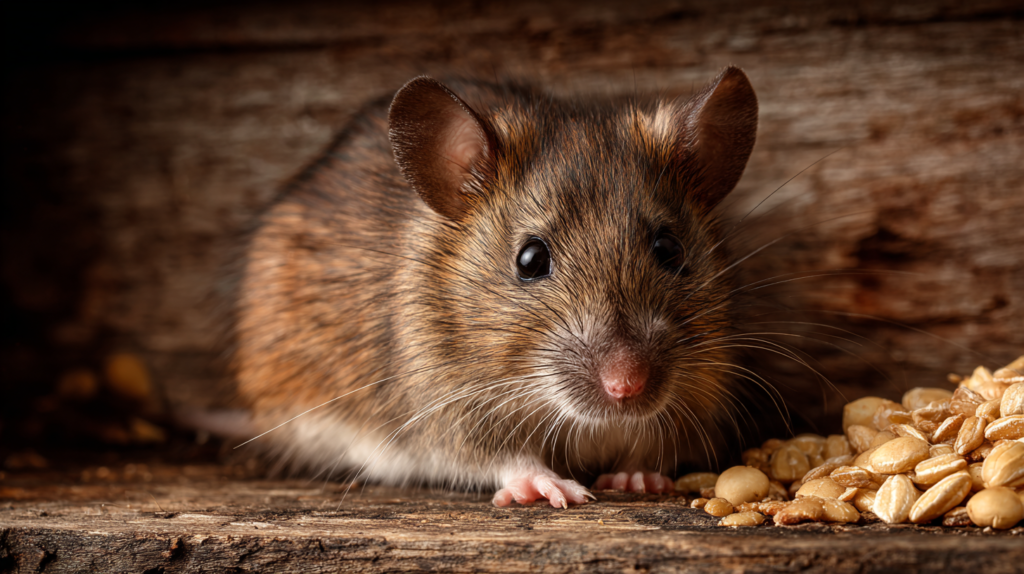
Enteritis in rodents refers to inflammation of the small intestine that disrupts normal digestive function and can rapidly progress to life-threatening complications. Unlike larger mammals, rodents possess unique digestive systems that make them particularly vulnerable to intestinal inflammation, with their high metabolic rates and sensitive gut microbiomes creating perfect conditions for rapid disease progression.
The condition affects multiple rodent species differently, with guinea pigs showing particular susceptibility due to their complex vitamin C requirements, while hamsters and rats face increased risks due to their diverse dietary habits and stress-sensitive digestive systems. According to veterinary studies, enteritis accounts for approximately 15-20% of all rodent emergency visits, making it one of the most common yet preventable conditions affecting small pets.
What makes enteritis particularly dangerous in rodents is the speed at which it progresses. While larger animals might show gradual symptoms over days or weeks, rodents can develop severe dehydration and systemic complications within 12-24 hours of initial symptom onset. This rapid progression stems from their high surface-area-to-volume ratio and accelerated metabolic processes, which quickly deplete energy reserves and fluid balance when digestive function becomes compromised.
The inflammation typically begins in the small intestine but can spread throughout the digestive tract, affecting nutrient absorption, fluid balance, and overall systemic health. Early recognition and intervention become critical factors in successful treatment outcomes, with delayed treatment often resulting in irreversible complications or death.
The Four Serious Triggers of Enteritis in Rodents
| Enteritis Trigger | Risk Level | Common Causes | Affected Species | Prevention Strategy |
|---|---|---|---|---|
| Dietary Indiscretions | High | Sudden diet changes, contaminated food, inappropriate treats | All rodent species | Gradual diet transition, quality food storage |
| Bacterial Infections | High | Salmonella, E. coli, Clostridium species | Rats, mice, hamsters | Sanitary housing, regular cleaning protocols |
| Parasitic Infections | Medium | Intestinal worms, protozoa, coccidia | Guinea pigs, chinchillas | Regular fecal examinations, quarantine protocols |
| Stress-Induced Disruption | Medium | Environmental changes, handling stress, overcrowding | Guinea pigs, hamsters | Stable environment, gentle handling techniques |
| Medication Exposure | High | Antibiotics, chemical toxins, overdosing | All species (guinea pigs most sensitive) | Veterinary supervision, proper dosing protocols |
| Nutritional Imbalances | Medium | Vitamin C deficiency, fiber deficiency, mineral imbalances | Guinea pigs, chinchillas | Species-appropriate diet, vitamin supplementation |
1. Dietary Indiscretions and Nutritional Imbalances
The most prevalent trigger of enteritis in rodents stems from inappropriate dietary choices and nutritional imbalances that disrupt the delicate gut microbiome. Modern pet food manufacturers have significantly improved small animal nutrition, yet many owners unknowingly expose their pets to dietary triggers through well-intentioned but harmful feeding practices.
High-sugar treats, processed human foods, and sudden dietary changes create inflammatory responses within the sensitive rodent digestive system. Fresh fruits, while seemingly healthy, can trigger fermentation processes that produce harmful gases and toxins when fed in excessive quantities. A study published in the Journal of Small Animal Practice found that 60% of rodent enteritis cases correlated with recent dietary changes or inappropriate treat consumption.
Specific dietary triggers include chocolate, caffeine, onions, garlic, and high-fat foods that overwhelm the rodent’s ability to process complex compounds. Additionally, moldy or spoiled food items can introduce harmful bacteria and mycotoxins that directly inflame intestinal tissues. The problem becomes compounded when owners mistake reduced appetite for pickiness rather than recognizing it as an early warning sign of digestive distress.
Pelleted diets designed for different species create another common trigger, as rabbit pellets fed to guinea pigs or hamster food given to rats fails to meet species-specific nutritional requirements. These mismatched diets can create deficiencies or excesses that stress the digestive system and predispose animals to inflammatory conditions.
2. Bacterial and Parasitic Infections
Pathogenic microorganisms represent the second major trigger of enteritis in rodents, with bacterial infections being particularly devastating due to the rapid multiplication rates possible within the warm, moist intestinal environment. Common bacterial culprits include Salmonella, E. coli, and Clostridium species, which can overwhelm the beneficial gut bacteria that normally maintain digestive health.
Parasitic infections, while less common in indoor pets, can cause severe enteritis through direct tissue damage and immune system activation. Giardia, coccidia, and various nematode species create inflammation through their feeding activities and waste products, while simultaneously compromising the intestinal barrier function that prevents secondary bacterial infections.
The transmission of these pathogens often occurs through contaminated food, water, or bedding materials, with overcrowded conditions and poor sanitation increasing infection risks exponentially. Multi-pet households face particular challenges, as infected animals can rapidly spread pathogens to healthy cage mates through shared food dishes, water bottles, and environmental contamination.
Antibiotic-associated enteritis represents a particularly concerning subset of bacterial triggers, occurring when broad-spectrum antibiotics disrupt normal gut flora and allow opportunistic pathogens to proliferate. This condition highlights the importance of using antibiotics judiciously and under veterinary supervision, as inappropriate antibiotic use can create more problems than it solves.
3. Stress-Induced Digestive Disruption
Chronic stress profoundly impacts rodent digestive health through complex neurological and hormonal pathways that alter gut function and immunity. The gut-brain axis in rodents is particularly sensitive, with stress hormones like cortisol directly affecting intestinal motility, mucus production, and barrier function.
Environmental stressors such as loud noises, temperature fluctuations, overcrowding, and predator presence (including household cats and dogs) trigger sustained stress responses that compromise digestive health. Research indicates that chronically stressed rodents show altered gut microbiomes, increased intestinal permeability, and enhanced susceptibility to pathogenic infections.
Social stress within multi-pet environments creates additional complications, as dominant animals may prevent subordinate cage mates from accessing food and water, leading to nutritional stress that predisposes to enteritis. The combination of social hierarchy stress and nutritional compromise creates perfect conditions for digestive inflammation to develop.
Handling stress, particularly in newly acquired pets or during veterinary visits, can trigger acute stress responses that manifest as digestive upset within hours of the stressful event. Understanding and minimizing these stress factors becomes crucial for preventing stress-induced enteritis and maintaining optimal digestive health.
4. Medication and Chemical Exposure
The fourth major trigger involves exposure to medications and environmental chemicals that disrupt normal digestive function or directly damage intestinal tissues. Many common household products, cleaning chemicals, and even some pet care products can cause enteritis when ingested or absorbed through the respiratory system.
Certain medications, particularly those not specifically formulated for small animals, can cause significant digestive upset and inflammation. Non-steroidal anti-inflammatory drugs (NSAIDs) commonly used in humans and dogs can cause severe gastric and intestinal ulceration in rodents, while some antibiotics can disrupt beneficial gut bacteria and predispose to secondary infections.
Environmental toxins such as pesticides, herbicides, and household chemicals can accumulate in the sensitive rodent digestive system, causing chronic inflammation and compromised immune function. Cedar and pine shavings, commonly used as bedding materials, contain aromatic compounds that can irritate the digestive tract and contribute to inflammatory responses.
Heavy metal exposure from contaminated water, lead-based paints, or certain imported products can cause both acute and chronic enteritis through direct tissue damage and disrupted enzymatic processes. The cumulative effects of low-level chemical exposure often go unrecognized until severe digestive problems develop, making prevention through environmental management crucial for long-term health.
Recognizing the Warning Signs: Early Detection Saves Lives
| Warning Sign | Urgency | Description | Time to Action | Associated Complications |
|---|---|---|---|---|
| Sudden Appetite Loss | Emergency | Complete refusal to eat or drink | Immediate veterinary care | GI stasis, dehydration, organ failure |
| Severe Diarrhea | Emergency | Watery, bloody, or mucoid stools | Within 2-4 hours | Rapid dehydration, electrolyte imbalance |
| Lethargy & Weakness | Urgent | Reduced activity, unresponsive behavior | Same day veterinary visit | Systemic infection, metabolic disorders |
| Abdominal Distension | Urgent | Swollen, painful abdomen | Within 6-12 hours | Intestinal blockage, gas buildup |
| Reduced Fecal Output | Urgent | Fewer, smaller, or no droppings | Within 12-24 hours | GI stasis, impaction |
| Grinding Teeth (Bruxism) | Monitor | Audible tooth grinding, indicating pain | Within 24 hours | Chronic pain, dental issues |
| Hunched Posture | Monitor | Curved back, reluctance to move | Within 24 hours | Abdominal pain, internal inflammation |
| Dehydration Signs | Emergency | Skin tenting, sunken eyes, dry gums | Immediate intervention | Kidney failure, circulatory collapse |
Early recognition of enteritis symptoms can mean the difference between successful treatment and tragic loss. Rodents instinctively hide signs of illness as a survival mechanism, making careful observation essential for detecting subtle changes that indicate developing health problems.
The earliest warning signs often involve changes in eating behavior, with affected animals showing decreased appetite, selective eating, or complete food refusal. Owners should monitor daily food consumption and note any sudden changes in feeding patterns or food preferences. Healthy rodents typically maintain consistent eating schedules and food preferences, making any deviation potentially significant.
Changes in fecal output provide crucial diagnostic information, with affected animals producing smaller, harder pellets, mucus-covered droppings, or experiencing complete cessation of defecation. The normal rodent produces numerous small, dry pellets throughout the day, and any change in quantity, consistency, or frequency warrants immediate attention.
Behavioral changes accompanying enteritis include decreased activity levels, hunched posturing, reluctance to move, and social withdrawal from cage mates. Affected animals may appear lethargic, spend more time in hiding spots, and show reduced interest in normal activities such as grooming, exploring, or playing.
Physical signs become apparent as the condition progresses, including visible weight loss, dehydration (evidenced by skin tenting when gently pinched), and abdominal distension or sensitivity. Advanced cases may show signs of pain such as teeth grinding, rapid breathing, or vocalizations when handled.
Proven Treatment Strategies: Veterinary-Approved Solutions
Successful treatment of enteritis in rodents requires prompt veterinary intervention combined with supportive care that addresses both the underlying cause and the secondary complications that develop. The treatment approach must be tailored to the specific trigger identified and the individual animal’s condition and response.
| Treatment Phase | Timeline | Diagnostic Procedures | Treatment Interventions | Expected Outcomes |
|---|---|---|---|---|
| Emergency Stabilization | 0-6 hours | Physical examination Vital signs assessment Hydration status check Pain evaluation | IV/SQ fluid therapy Pain management Temperature support Nutritional support | Stabilized vital signs, reduced pain, improved hydration |
| Diagnostic Workup | 6-24 hours | Fecal examination Blood chemistry panel Complete blood count Radiographic imaging | Targeted antibiotic therapy Probiotic administration Anti-parasitic treatment Dietary modification | Identified causative agent, targeted treatment initiated |
| Intensive Treatment | 1-7 days | Daily clinical monitoring Fecal output tracking Weight monitoring Response assessment | Continued fluid support Force-feeding if necessary Medication adjustments Environmental management | Clinical improvement, increased appetite, normal fecal production |
| Recovery Monitoring | 1-2 weeks | Follow-up examinations Fecal recheck Weight gain assessment Activity level evaluation | Gradual diet transition Probiotic continuation Stress reduction measures Medication tapering | Return to normal behavior, stable weight, consistent appetite |
| Long-term Management | 2-4 weeks | Periodic health checks Dietary tolerance tests Preventive screenings Owner education sessions | Dietary optimization Environmental enrichment Preventive protocols Owner training | Full recovery, established prevention routine, owner confidence |
| Prevention Maintenance | Ongoing | Regular wellness exams Annual fecal screens Dietary assessments Environmental evaluations | Optimal nutrition plan Stress management Hygiene protocols Early intervention strategies | Maintained digestive health, reduced recurrence risk, optimal quality of life |
Immediate Emergency Care
The first priority in treating enteritis involves stabilizing the patient through fluid therapy and supportive care measures. Dehydration develops rapidly in affected rodents and requires immediate correction through subcutaneous or intravenous fluid administration, depending on the severity of fluid loss and the animal’s ability to tolerate oral rehydration.
Temperature regulation becomes critical, as enteritis often causes body temperature fluctuations that can worsen the condition. Providing appropriate environmental warmth through heating pads, warm towels, or incubators helps maintain core body temperature and reduces metabolic stress during recovery.
Pain management, often overlooked in small animal medicine, plays a crucial role in recovery by reducing stress and encouraging normal behaviors such as eating and movement. Veterinary-approved pain medications designed for small animals can significantly improve comfort and treatment outcomes.
Targeted Therapeutic Interventions
Specific treatment protocols depend on the identified trigger, with bacterial infections requiring appropriate antibiotic therapy selected based on culture and sensitivity testing when possible. Broad-spectrum antibiotics should be used judiciously to avoid disrupting beneficial gut bacteria while effectively targeting pathogenic organisms.
Parasitic infections require specific anti-parasitic medications chosen based on the identified parasite species and the individual animal’s condition. Treatment protocols often involve multiple doses over several weeks to ensure complete elimination of the parasite life cycle.
Probiotics and prebiotics play increasingly important roles in treating enteritis by restoring beneficial gut bacteria and supporting immune function. These products must be specifically formulated for small animals and used under veterinary guidance to ensure appropriate strains and dosages.
Nutritional Support and Dietary Management
Nutritional support during recovery involves providing easily digestible, high-quality foods that support healing while avoiding ingredients that might trigger additional inflammation. Critical care diets specifically formulated for recovering small animals provide essential nutrients in forms that minimize digestive stress.
Syringe feeding may become necessary for animals unable or unwilling to eat independently, requiring specialized techniques and products designed for small animal nutrition. This intervention requires careful training and veterinary supervision to avoid aspiration and ensure adequate nutrient delivery.
Gradual dietary reintroduction helps prevent relapses by slowly returning to normal feeding patterns while monitoring for any signs of digestive upset. The transition period typically spans 7-14 days, depending on the severity of the initial condition and the individual animal’s response to treatment.
Prevention Strategies: Building Long-Term Digestive Health
Preventing enteritis in rodents requires a comprehensive approach that addresses all potential triggers while promoting optimal digestive health through proper husbandry, nutrition, and environmental management. The investment in prevention pays dividends through reduced veterinary costs, improved quality of life, and extended lifespan for beloved pets.
Optimal Nutrition and Feeding Practices
Establishing proper feeding routines involves providing species-appropriate pelleted diets supplemented with carefully selected fresh foods and treats. High-quality commercial pellets should form the foundation of the diet, with fresh foods added in moderation to provide variety and enrichment without overwhelming the digestive system.
Feeding schedules should remain consistent, with food provided at regular intervals and fresh water available constantly. Food dishes and water bottles require daily cleaning to prevent bacterial contamination, while uneaten fresh foods should be removed promptly to prevent spoilage and pest attraction.
Treat selection and portion control prevent many cases of dietary-induced enteritis by avoiding high-sugar, high-fat, or processed foods that can trigger digestive upset. Healthy treats include small portions of approved vegetables, herbs, and commercial treats specifically designed for the species.
Environmental Management and Stress Reduction
Creating stress-free environments involves providing appropriate housing, temperature control, and enrichment opportunities that support natural behaviors and reduce anxiety. Cage size, bedding materials, and environmental complexity all contribute to overall stress levels and digestive health.
Noise reduction and predictable routines help minimize environmental stressors that can trigger digestive problems. Loud noises, sudden movements, and irregular schedules create chronic stress that compromises immune function and digestive health.
Social considerations in multi-pet households require careful attention to compatibility, resource distribution, and hierarchy establishment. Providing multiple food and water sources, hiding spots, and enrichment items reduces competition and social stress.
Regular Health Monitoring and Veterinary Care
Establishing baseline health parameters through regular veterinary examinations helps identify subtle changes that might indicate developing problems. Annual wellness examinations for healthy animals and more frequent monitoring for animals with previous health issues ensure early detection of potential problems.
Daily health assessments by owners provide crucial information about changing conditions and treatment effectiveness. Simple observations such as appetite, activity level, and fecal output can reveal important health trends that guide care decisions.
Maintaining detailed health records helps track patterns and identify triggers that might predispose individual animals to enteritis. This information proves invaluable for preventing future episodes and optimizing long-term care strategies.
A visual flowchart illustrating the four key prevention pillars: 1) Species-appropriate nutrition with high-quality pellets and limited treats, 2) Stress-free environment with consistent routines and appropriate housing, 3) Regular veterinary monitoring and health assessments, and 4) Clean, safe living conditions with proper hygiene practices. The flowchart shows how these elements work together to maintain optimal digestive health and prevent enteritis in rodents.
Advanced Treatment Considerations and Prognosis
The prognosis for rodents with enteritis varies significantly based on the underlying cause, severity at presentation, and promptness of treatment initiation. Early intervention dramatically improves outcomes, with many animals making complete recoveries when treatment begins within the first 24-48 hours of symptom onset.
Severe cases may require intensive supportive care including hospitalization, intravenous fluid therapy, and around-the-clock monitoring. These cases often involve significant financial investment and emotional stress for owners, highlighting the importance of prevention and early intervention strategies.
Long-term management may be necessary for animals with chronic digestive sensitivities or those who have experienced severe episodes. These patients often require specialized diets, regular monitoring, and modified environmental conditions to prevent relapses and maintain optimal health.
Recent advances in small animal medicine have introduced new treatment options including specialized probiotics, targeted nutritional supplements, and improved diagnostic techniques that allow for more precise treatment approaches. These developments offer hope for better outcomes and reduced recovery times for affected animals.
The Role of the Veterinary Team
Successful treatment of enteritis in rodents requires collaboration between knowledgeable veterinarians, skilled veterinary technicians, and committed pet owners. Not all veterinary practices have extensive experience with small animals, making it important to identify veterinarians with specific expertise in rodent medicine.
Veterinary specialists in exotic animal medicine can provide advanced diagnostic capabilities and treatment options that may not be available in general practice settings. These specialists often have access to specialized equipment, laboratory facilities, and treatment protocols designed specifically for small animals.
The veterinary team’s role extends beyond immediate treatment to include client education, prevention counseling, and long-term health management planning. This comprehensive approach addresses not only the immediate medical needs but also the underlying factors that may have contributed to the condition.
Emergency veterinary services play a crucial role in managing acute cases, as enteritis can develop rapidly and progress to life-threatening complications outside of normal business hours. Having access to 24-hour emergency care can be lifesaving for severely affected animals.
Frequently Asked Questions
Everything you need to know about enteritis in rodents
For more expert pet care tips and product recommendations, visit BlithePet.com — your trusted source for pet wellness.
Conclusion
Enteritis in rodents represents a serious but largely preventable condition that requires understanding, vigilance, and prompt action from dedicated pet owners. By recognizing the four major triggers – dietary indiscretions, infections, stress, and chemical exposure – and implementing comprehensive prevention strategies, you can significantly reduce your pet’s risk of developing this potentially life-threatening condition.
The key to successful management lies in early recognition of warning signs, immediate veterinary intervention, and commitment to long-term prevention strategies that address all aspects of your rodent’s health and well-being. Remember that your pet’s digestive health reflects the quality of care provided, and investing in proper nutrition, stress management, and regular veterinary care pays dividends in terms of longevity and quality of life.
Modern veterinary medicine offers excellent treatment options for rodents with enteritis, but prevention remains the most effective strategy for protecting your beloved companion. By staying informed, maintaining optimal husbandry practices, and working closely with experienced veterinary professionals, you can help ensure your rodent enjoys a long, healthy, and happy life free from the complications of enteritis.
Have a similar experience with your pet? Share it in the comments below!

